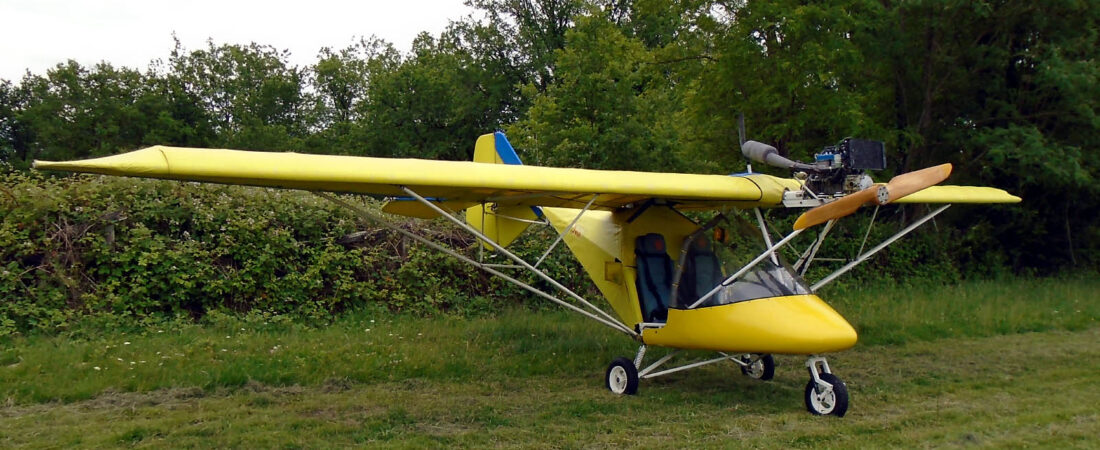I was so glad that I tackled the engine fettling and exhaust work yesterday because I started today with such a long list of niggly little jobs that needed doing before I could get on to re-fitting MYRO’s wings that if I’d had those two extra largish jobs on the list as well, it would have made it very difficult to make the progress today that I did. As it was, there was one setback which I’ll come onto later which I hope will not take too long to resolve.
So the day began with lots of cable tying and tidying things up, stuff like that. I also had to add oil to the gearbox and wire lock the gearbox plugs and exhaust springs before turning my attention to the prop. The propeller I got hold of is a 3-blade Ivo Prop and it only took me half an hour or so to attach it to the prop flange and torque the 6 fixing bolts up to 200 in/lb. I don’t like the centre nut as much as I did the hub on the now-gone Arplast but I think I prefer the black of the Ivo to the grey of the Arplast. I think it just goes better with MYRO’s general colour scheme and looks a bit more striking. Here are a couple of pics to show what I mean.


Then on to the battery. It’s easier to fit the battery with the wings off because to make it nice and secure, you need to use some large cable ties to hold it on and give them a really good tug. It all went very smoothly and ended up as a nice neat job. So with bated breath I reached into the cabin and flicked on the master switch and was pleased to see the master neon start glowing brightly. Then the fuel pump – same again and it burst into life for a second or so until I turned it off almost immediately as it would have been running dry. Then the big one. I turned the ignition key past the left and right mag positions to activate the starter and …. nothing. Dead as a doornail 😐
This is what I was worried about because when I removed MYRO’s panel and wiring loom, even though I was extremely careful, a couple of wires close to the rectifier end detached. I thought I’d re-attached them correctly but it seems possibly not. When I was working in my garage, it was a simple matter to go indoors and check wires and connections on the many reference photographs I’ve taken whenever I’ve done any kind of work on MYRO, but I can’t do that working over at Ken’s. So I’m resigned to having to get my wiring diagram out and physically check where the error is and I just hope that I don’t end up upside down in the cabin with my head under MYRO’s panel tracing circuits. I’ve just about had enough of that kind of thing 😕
I then sorted out the wing struts ready for re-fitting the wings and shortly after, Peter arrived. He and Ken gave me a hand and having done the job before and knowing what to look out for, pretty soon MYRO had its wings back on for the first time since the accident happened in May. It was a sight that gave me enormous pleasure and even though only the main struts were fitted at the time, here are a couple of pics to mark the event.


Some time ago, Ken and I had been thinking ahead to the day when I fly MYRO out for its check flight. The field I’ll be using which you can see in many of the pics suffers from good old Kentish flints that seem to rise to the surface over time and either remain embedded with sharp edges pointing upwards or even come right out and lie there fully exposed. They can’t be left and as it was late afternoon by now and there was a bit of a crowd present, we thought we’d have a group flint picking-up session. It was very effective and in an hour and a half or so, we cleared a good runway’s length. The others then all had to go and before leaving I thought I’d attach MYRO’s wing jury struts to more or less finish the job off. By the time I’d finished, it was getting quite late and a bit dark and here are two final shots, taken after I’d moved MYRO into the centre of the concrete standing before leaving. As I had them in the car already, you can see that I’d put the seat cushions and head rests in the cabin as there’s no more work to do in there (unless I have to start tracing circuits, as I mentioned previously).


So that was it. It was great to see MYRO back looking like a proper aircraft again and a pity that I’d had the setback with the electrics for the starter. Hopefully I’ll be able to sort that out pretty quickly and with luck, it won’t be too long now before I’ll be calling Chris up to come and do the permit inspection. Let’s hope so, anyway.


































